

The Eurythmics method of teaching music created by Emile Jaques-Dalcroze in 1905, uses physical movement to teach
musical structure and rhythm. In 1926, Carl Orff Shulwerk developed a method of teaching music that
uses the atmosphere like a child’s play world. He said that music is learned by doing, improvisation
is prevalent, and simpler percussion instruments can be used to make melodies.
In 1945, Zoltan Kodaly invented the Kodaly method of teaching music. Under this approch, children are first introduced to
concepts through experiences, listening, or movement, such as hand gestures that represent each note.
In the 1950’s, Shin’ichi Suzuki created a new way for children to learn music more effectively where they
are taught at a young age through listening and imitating the song they just heard.
At our school, the younger grades are taught rhythm using a single high note, a single low note, and rests.
As students reach higher grades, they are introduced to more concepts, such as half notes and
whole notes, more rests and eventually different note names and pitches.


The Rhythm Ramp is a wooden ramp with metal hangers equally spaced apart along its entire length.
A complete set of chimes covering a full octave is included with the ramp.
The Rhythm Ramp also comes with a book
that guides the students in creating melodies.
Based on the sheet music, the students attempt to select the appropriate chimes and affix
them on the desired hangers to create the chosen melody. Next, the students roll the ball
down the ramp, hitting the chimes and producing a melody which the students evaluate for
correctness based on auditory feedback. If the students perceive the arrangement as incorrect,
the students will make adjustments to the chimes and their positions and roll the ball down again
to re-evaluate their composition. The students then finally confirm the correctness of the chimes
and placement by comparing their layout to the solution presented on the following page of the book.
The rhythms become more complex as the students progress through the book. This invention will teach
the students rhythm, pitch recognition and musical notation while still having fun.
We were inspired by the
NTT Docomo TV commercial which features
a video of a ball rolling down a giant wooden xylophone, producing a song.
The Rhythm Ramp can not only be used as a teaching tool but also as a musical instrument. Team Ctrl-Z decided to have some fun with its invention and arranged the performance of Beethoven's Ode to Joy on the ramp. Enjoy...





We have conducted a thorough patent search and have found nothing similar to the Rhythm Ramp. We identified a product, the Music Motion Marble Run, where the child rolls a ball down a series of stacked blocks to strike various tone bars. However, this product does not teach music, and in particular rhythm, because the ball strikes randomly arranged tone bars, making the Music Motion Marble Run more of a toy than a learning tool. On the other hand, the Rhythm Ramp teaches rhythm and music notation. It does this by using a multimodal approach (a combination of visual, auditory and kinaesthetic) which researchers find to be more effective than other approaches that utilize single learning modalities. With the Rhythm Ramp, the students can position the chimes on the hangers themselves, see the pattern of the rhythm and hear the pitch of the melody they created to form an initial self-assessment of their musical proficiency. The auditory feedback provided by the melody, together with a solution diagram provided in the answer booklet, reinforce important music concepts while being fun.

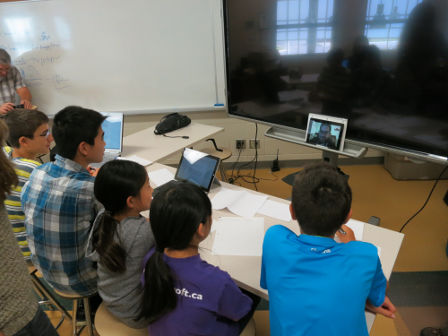
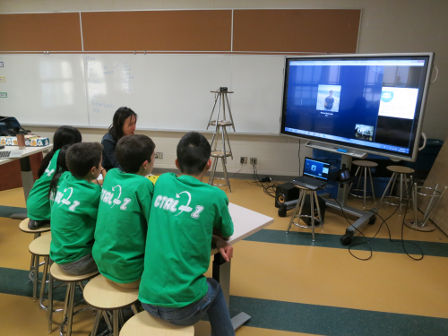


The photos below capture the moment when the team came up with its Rhythm Ramp idea.



Ctrl-Z first went to a local lumber yard to buy door moulding which would be used as the ramp. Then bought copper tubing from RONA. We found metal rods at Dollorama.
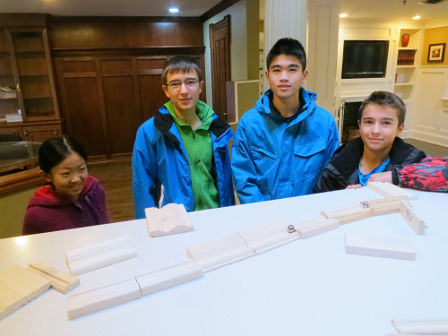
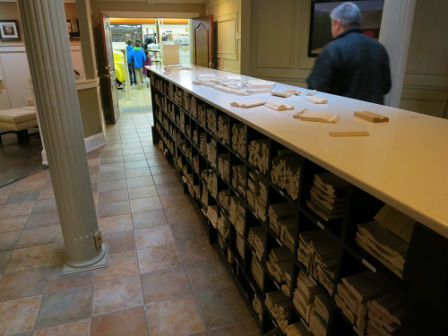
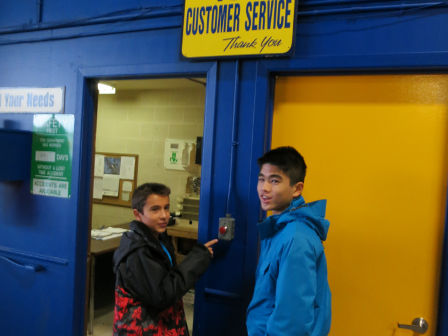
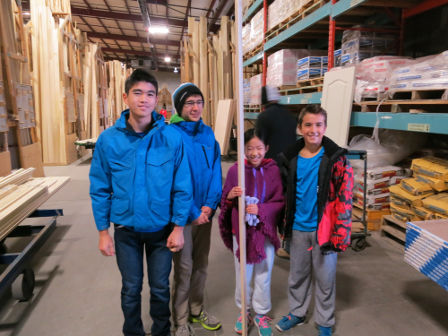

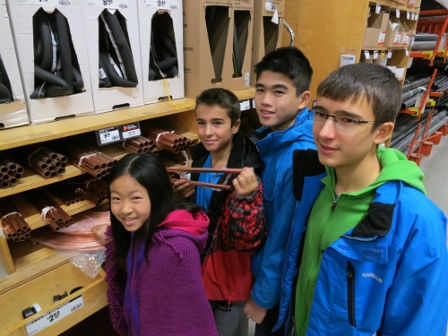
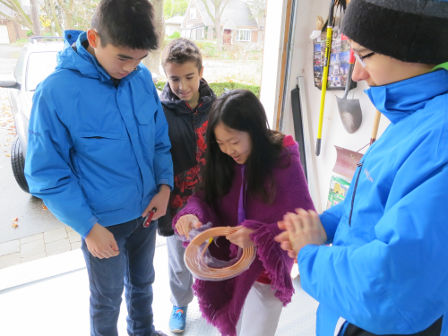
We found a website that describes how to make the wind chimes out of copper pipe: An Engineering Approach to Wind Chime Design and Build. On the website there was an Excel spreadsheet entitled All Musical Notes DIY Chime Tube Calculator (A=440) that contained the information we needed. The pipe we used was half-inch type M copper pipe which has an outer diameter of 0.625 inches and an inner diameter of 0.569 inches. We entered these numbers into the Excel spread-sheet to find the required lengths for each note. We chose the octave C6 to C7 because it gave a pleasant sound with reasonable length pipes. Then, metal wire was cut to the correct lengths and bent at the top to form hangers for the chimes. The metal wire hangers were then inserted into holes we drilled in the ramp. Dental floss was used to hang the chimes with a plastic tube strung through, allowing us to place and remove the chimes from the hangers with ease.
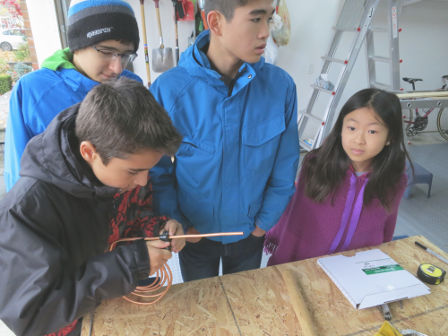

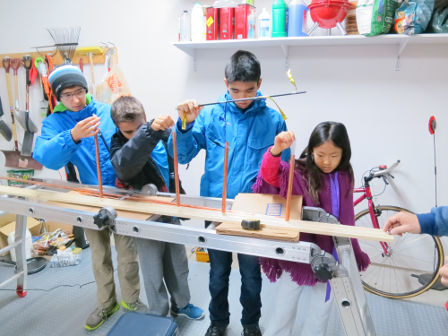
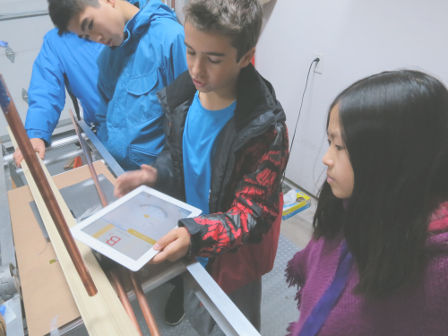
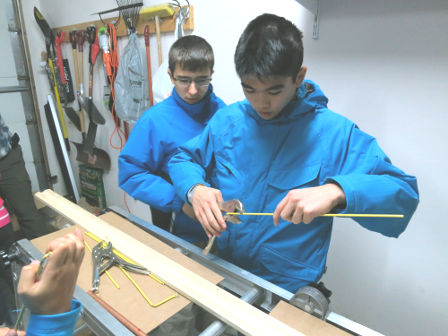


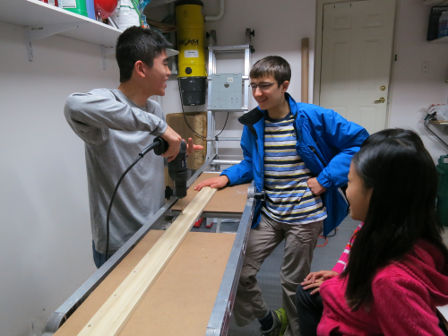

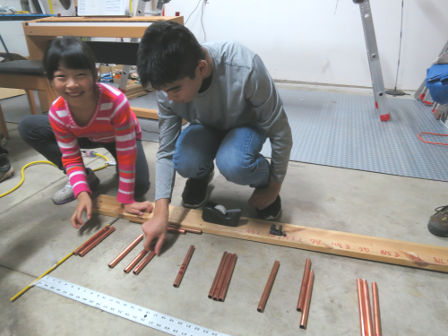


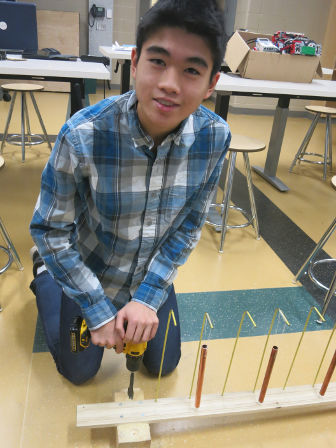
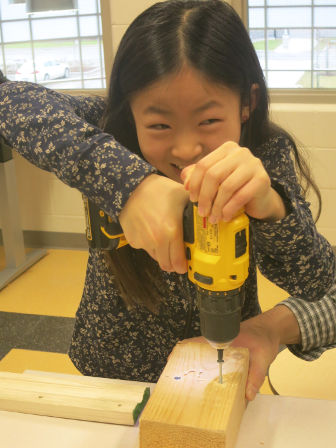
We were invited to perform the following experiment in Ms. Seun's grade 1 music class:
This experiment compares the effectiveness of the Rhythm Ramp compared to 2 different traditional methods.
| Group A (traditional method) | Group A (with Rhythm Ramp) |
| First, the instructor would sing a simple song without the lyrics. Then, the students would organize a set of cue cards with notes and rests on them to match the song. Example: ?,rest,?,? | First, the instructor would sing a simple song without the lyrics. Then, the students would set up the Rhythm Ramp so that it plays back the melody. |
| Group B (traditional method) | Group B (with Rhythm Ramp) |
| Teacher sings a pattern of a few notes (e.g. high, high, low, low) where "high" represents a C7 and low represents a C6. Then kids have to mimic the singing with hand gestures. For example, when a high note is sung the kids raise their hand, and when a low note is sung they lower their hand. | First, the instructor would sing a simple song without the lyrics. Then, the students would set up the Rhythm Ramp so it plays back the simple melody. |
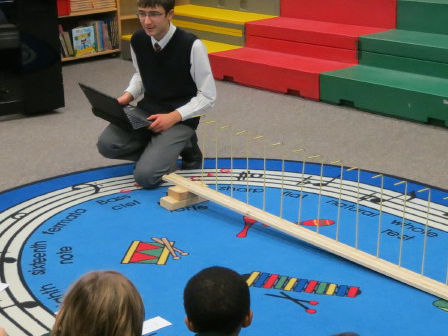
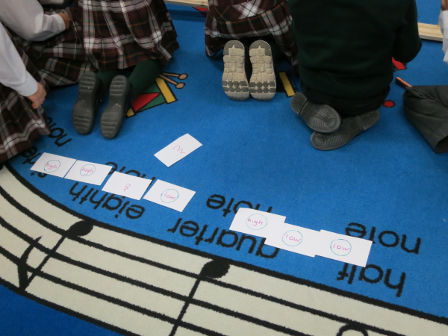
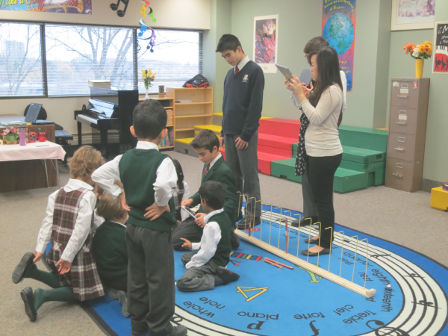

Ctrl-Z conducted an experiment with the Rhythm Ramp on a 20-student grade 4 music class. These students had a minimum of 5 years of music instruction at Bayview Glen School. Ctrl-Z first randomly selected a first group of 3 students from the class and sent 2 of them to wait outside the room. The student remaining in the room was instructed to play a short song from the Rhythm Ramp instructional booklet on the xylophone. As the child played the song, Ctrl-Z recorded the number of times he had to restart, the percentage of correct notes, and the elapsed time since he first started. Once the earlier of: (a) 5 minutes had passed, and (b) the child’s successfully played the song, Ctrl-Z excused the child and retrieved the next child from the hallway. The same process was repeated for the remaining 2 students initially selected. Ctrl-Z then selected 3 different students from the class, explained the Rhythm Ramp and asked them to individually use the Rhythm Ramp to create the same melody from the instructional booklet. Ctrl-Z recorded data similar to that collected for each member of the first group of students.
Ctrl-Z found that the 3 students who used the xylophone played all the notes correctly but the rhythms were not accurate and it required an average of 50 seconds before they could play the song acceptably. During those 50 seconds, the students would take approximately 2 to 3 attempts to correctly play the song. However, when using the Rhythm Ramp, the 2nd group of 3 students created the song perfectly on just their second attempt in significantly less time than 50 seconds. Interestingly, all 3 students using the Rhythm Ramp appeared to be more engaged and more excited than the first group of 3 students and wanted to continue using the Rhythm Ramp following the Ctrl-Z experiment to create more songs.
From this experiment, Ctlr-Z found that the students using the Rhythm Ramp were more engaged, had more fun and were more excited than those who used the xylophone. As well, Rhythm Ramp students enquired about the possibility of using the innovative teaching tool in their school music class on a permanent basis.
The students used the Rhythm Ramp to play “Twinkle, Twinkle Little Star” for the entire 45 minute music lesson. Initially, the plan was to use the Rhythm Ramp for only the first portion of the class. However, it was found to be a very engaging approach to teaching and instructor, Orsi Lengyel, felt compelled to use the Rhythm Ramp for the whole class. Ctrl-Z's observations are as follows:
Our conservative financial projection suggests that the Rhythm Ramp is a viable business.
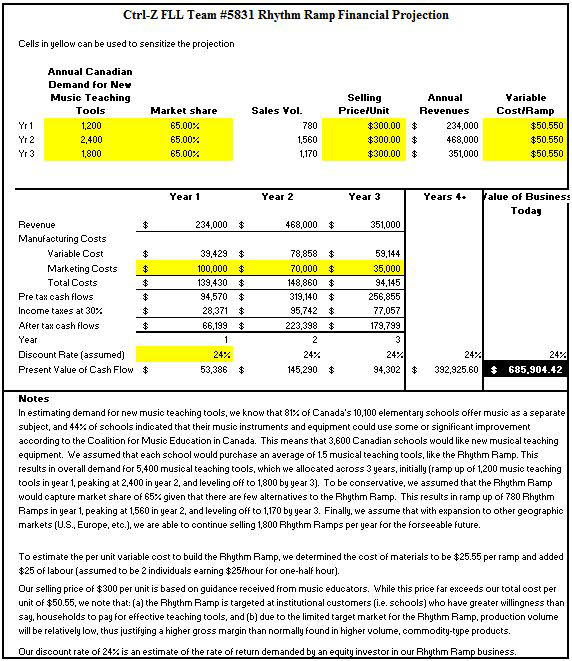
| Part | Price per Unit | Price per Ramp | Resource |
|---|---|---|---|
|
Bulk Lumber 6 feet ramp + 1 foot stand 7 feet/ramp |
$0.15/foot | $1.05/RAMP | http://www.homeresource.org/bulk/bulk-items/ |
|
6 Gauge Metal Wire 38cm X 20 pieces = 760 cm = 7.6 m 7.6 m/ramp |
$1.3/metre | $9.88/RAMP | http://www.alibaba.com/product-detail/6-gauge-wire_60084970111.html?s=p |
|
0.625 Inch Copper Tubing 4 of each note: C6 - 10 inches D6 - 9 7/16 inches E6 - 8 ⅞ inches F6 - 8 ⅝ inches G6 - 8 3/16 inches A6 - 7 11/16 inches B6 - 7 ¼ inches C7 - 7 1/16 inches 268.5 inches/ramp 22.375 feet/ramp |
$0.63/foot | $14.10/RAMP | http://www.alibaba.com/product-detail/5-8-Inch-Pancake-copper-tube_1634269533.html |
|
Cotton String about 20cm X 20 pieces = 400cm = 4m 4 m/ramp |
$1/420 feet | $0.03/RAMP | http://www.dollartree.com/Tool-Bench-Cotton-Twine-420-ft-Rolls/p325041/index.pro |
|
0.5 cm Plastic tubing 3 cm X 20 pieces = 60 cm 60 cm/ramp |
$0.1/metre | $0.06/RAMP | http://www.alibaba.com/product-detail/Flexible-Thin-Wall-Tubing-PVC-Transparent_60114353854.html?s=p |
|
Metal ball 2 units/ramp |
$0.005/unit | $0.01/RAMP | http://www.alibaba.com/product-detail/1-5-inch-steel-ball-carbon_60066378419.html |
|
1 instruction booklet (about 20 pages softcover) 1 unit/ramp |
$0.42/booklet | $0.42/RAMP | http://www.uprinting.com/bulk-booklet-printing.html | TOTAL: | $25.55/RAMP TOY-SET |
The ramp would be accompanied by an instructional booklet, metal chimes and 2 metal balls, all packaged in an easy-to-carry box with different sized compartments to accommodate the chimes of varying lengths.

